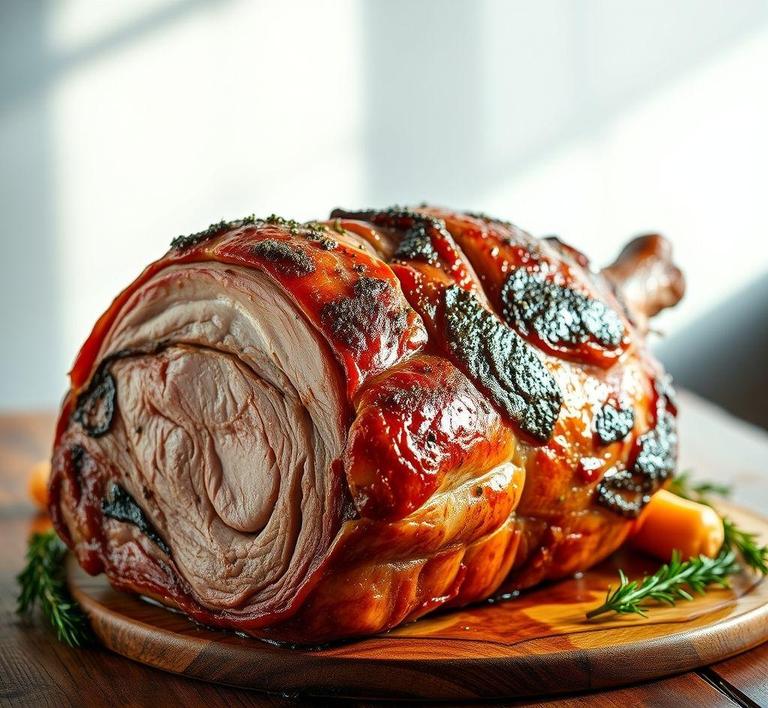If you’ve ever found yourself staring at a thawed Boston butt and wondering whether it’s safe to toss it back in the freezer, you’re not alone! Refreezing a Boston butt can be a bit tricky, but it’s definitely possible if you follow a few key guidelines. Whether you’ve thawed it for a big cookout and ended up with leftovers, or you’ve just realized you won’t be able to get to it in time, understanding how to refreeze this delicious cut of pork can help you avoid waste and keep your meals on track. In this guide, we’ll walk through the do’s and don’ts of refreezing Boston butt, so you can make sure it stays safe, flavorful, and ready for your next culinary adventure.
Can You Refreeze Boston Butt?

The question of whether or not you can refreeze Boston butt (also known as pork shoulder) is a common one, especially for those who tend to buy large cuts of meat in bulk or make a lot of food in advance. The short answer is yes, you can refreeze Boston butt, but with some important considerations about safety and quality.
When meat is thawed, its texture and safety can be affected by bacteria growth if left out at room temperature for too long. However, if handled properly, Boston butt (like most cuts of meat) can safely be refrozen. The key to refreezing any meat is ensuring that it has not been sitting out for too long, and it has been thawed under the right conditions.
How To Refreeze Boston Butt?
Refreezing Boston butt involves a few key steps to preserve both its safety and quality. Here’s how you should go about it:
1. Thaw Properly
If you have already thawed your Boston butt, the first step is to make sure it was thawed correctly. Never defrost meat at room temperature, as this allows bacteria to proliferate. The safest way to thaw frozen Boston butt is in the refrigerator. Allowing it to thaw slowly and evenly ensures that bacteria don’t have a chance to grow. This method may take a day or two, so plan ahead.
2. Inspect The Meat
Before refreezing, take a moment to inspect your pork. Check for any signs of spoilage, such as off smells, discoloration, or a slimy texture. If the meat appears compromised, it is best to discard it, as refreezing spoiled meat will only extend the shelf life of the bacteria present, and it can be harmful when consumed later.
3. Cook Before Refreezing (Optional)
While it’s safe to refreeze raw Boston butt that has been properly thawed, cooking the meat before refreezing it is often the best option. Cooking kills bacteria and can help preserve the quality of the meat when it’s frozen again. Additionally, cooked pork tends to fare better in the freezer, as the fat and moisture inside the meat are more stable.
If you decide to cook the Boston butt before refreezing, let it cool completely before sealing it in an airtight container or freezer bag. Allowing it to cool prevents condensation, which can affect the texture when it’s reheated.
4. Package Correctly
To prevent freezer burn and maintain the quality of the meat, proper packaging is crucial. Wrap the pork tightly in plastic wrap, aluminum foil, or a vacuum-sealed bag. Vacuum sealing is particularly effective because it removes air from the packaging, reducing the risk of freezer burn.
5. Label And Date
As with any refrozen or leftover food, it’s important to label the packaging with the date you froze it. This will help you keep track of how long it’s been in the freezer. Ideally, refrozen Boston butt should be consumed within three to four months for the best flavor and texture.
Quality Impact
Refreezing Boston butt can have some impact on the quality of the meat, especially in terms of texture and flavor. While it’s generally safe to do so, the freezing and thawing process can cause some degradation.
1. Texture Changes
One of the most noticeable effects of refreezing Boston butt is the potential alteration of texture. Meat contains water, and freezing causes ice crystals to form. When meat is thawed, these ice crystals break apart the muscle fibers, causing some of the water to leak out. This can lead to a drier, more crumbly texture when the meat is refrozen and reheated. For Boston butt, which is typically a fatty cut, this is especially important because the fat helps keep the meat moist. Repeated freezing can cause the fat to lose its integrity, leading to a less juicy outcome when cooked.
2. Flavor Alteration
The flavor of refrozen Boston butt may not be as rich or robust as it was initially. Freezing can slightly mute the flavors of the meat, and while the initial flavor might still be good, it may lose some of its depth. Additionally, the longer the meat stays frozen, the more noticeable these flavor changes may become.
3. Moisture Loss
When you freeze and thaw meat multiple times, moisture loss becomes a serious factor. The first thawing cycle is the worst, but refreezing after cooking or thawing further accelerates the loss of moisture. This can result in a drier cut of meat when it’s cooked later. This is one reason why many people choose to cook Boston butt before freezing it again, as it helps lock in moisture.
4. Freezer Burn
Freezer burn is another potential concern with refreezing any kind of meat, including Boston butt. When meat is exposed to air in the freezer, the surface can become dehydrated, leading to tough, dry patches. These areas are typically edible but are less enjoyable to eat. Vacuum sealing or tightly wrapping the meat is the best way to prevent freezer burn, but if you plan on keeping the Boston butt in the freezer for a long time, it’s worth using additional protection, like a second layer of plastic wrap.
Refreezing Boston butt is possible, but it’s not without its considerations. To ensure the meat remains safe and retains as much of its original quality as possible, you should follow a few basic guidelines. Thaw it properly in the refrigerator, inspect the meat for any signs of spoilage, and consider cooking it before refreezing to help preserve both its safety and its flavor. Always use airtight packaging and be mindful of how long it stays in the freezer to avoid freezer burn and texture degradation.
While refreezing Boston butt can slightly affect its flavor and texture, especially when done multiple times, it remains a viable option for those who are mindful of food safety and handling. If you plan to refreeze it, try to do so as soon as possible after thawing, and aim to cook it within a few months for the best results.
Is It Safe To Refreeze Boston Butt?
Refreezing Boston Butt (also known as pork shoulder) is a topic that generates a lot of questions for home cooks, especially those who find themselves with leftovers or a partially thawed piece of meat. In principle, it’s not ideal to refreeze Boston Butt after it has been thawed, as doing so can compromise the quality and safety of the meat. However, there are certain conditions under which it can be safe to refreeze pork shoulder, provided you handle it properly.
The primary concern when refreezing Boston Butt is the risk of bacterial growth. When the meat is thawed, bacteria that might have been dormant in the frozen state become active. If the pork is refrozen after being exposed to temperatures between 40°F and 140°F for an extended period, there’s a significant risk that harmful bacteria like Salmonella or E. coli could proliferate, leading to foodborne illnesses.
However, if the pork butt has been kept at a safe temperature throughout the thawing process-either in the refrigerator (below 40°F) or through quick methods like a cold-water thaw-then refreezing can be relatively safe, though it may impact the texture and taste of the meat. The key to refreezing pork shoulder safely is ensuring that it has not spent too much time in the danger zone of temperature. In general, if the meat has thawed in the fridge and hasn’t been out for more than 1-2 days, refreezing is considered safe.
Signs That Boston Butt Should Not Be Refrozen
It’s important to know when a piece of Boston Butt should not be refrozen, as doing so could lead to health risks. Here are some key signs to look out for:
- Unpleasant Odor: If your Boston Butt has developed a sour, rancid, or foul smell, it is a clear indicator that it has spoiled. Freezing does not kill bacteria, it only slows their growth, so if the meat has been mishandled or kept at unsafe temperatures, bacteria may have multiplied, rendering the meat unsafe to eat-even after refreezing.
- Slimy or Sticky Texture: If the surface of the meat feels slimy or sticky when touched, this is a sign that bacterial growth has occurred. The meat will be less appealing after refreezing, and it may be unsafe to consume.
- Discoloration: Fresh pork should have a pinkish or pale red color. If the meat has turned grayish, brown, or has spots of darkened color, it might have gone bad. While discoloration alone doesn’t always indicate spoilage, it could be a warning sign when combined with other factors like an off smell or unusual texture.
- Extended Thawing Time: If your Boston Butt has been left out at room temperature for more than two hours (or one hour if it’s particularly warm), it’s no longer safe to refreeze. Bacteria can grow rapidly at room temperature, so even if the meat still appears okay, it could be unsafe after being left out too long.
- Excessive Freezing and Thawing Cycles: Every time meat is frozen and thawed, it undergoes changes that can degrade its quality, especially the texture. If the pork butt has already been thawed and refrozen once, it’s better not to refreeze it again, as it will become even more watery, tough, and unappetizing.
Common Refreezing Mistakes
Refreezing Boston Butt is more common than people realize, but several mistakes can make the process unsafe or lead to a loss of flavor and texture:
- Thawing at Room Temperature: One of the biggest mistakes people make when refreezing Boston Butt is leaving the meat to thaw at room temperature. This promotes bacterial growth, increasing the risk of foodborne illness. Always thaw meat in the refrigerator or use a cold water bath to ensure it remains at a safe temperature during the thawing process.
- Improper Storage: Refreezing meat without proper storage can lead to freezer burn or freezer flavor. For best results, wrap the Boston Butt in a vacuum-sealed bag or heavy-duty plastic wrap before freezing. Freezer burn occurs when the meat is exposed to air in the freezer, causing dehydration and oxidation, which negatively affects both texture and taste.
- Refreezing More Than Once: Refreezing Boston Butt multiple times is not recommended. Each time you thaw and refreeze meat, its texture deteriorates. The meat will lose moisture, become tougher, and can develop an unappetizing texture. Avoid the cycle of thawing and refreezing unless absolutely necessary.
- Not Checking Temperature: Refreezing meat without ensuring that it hasn’t spent too long in the ‘danger zone’ (40°F to 140°F) can lead to bacterial contamination. Use a food thermometer to check the internal temperature during thawing and before refreezing to ensure that it has not been kept at unsafe temperatures.
Tips And Tricks
To maximize the safety and quality of your Boston Butt when refreezing, here are some helpful tips:
- Thaw in the Refrigerator: Always thaw your pork shoulder in the fridge rather than on the counter. This keeps the meat at a safe temperature throughout the process. Plan ahead, as this may take 24-48 hours depending on the size of the cut.
- Use Vacuum Sealing: For the best results when freezing, use a vacuum-sealed bag. Vacuum sealing removes air, helping to prevent freezer burn and preserving the texture and flavor of the pork.
- Refreeze in Portions: If you’re unsure whether you’ll use the entire pork shoulder after thawing, consider cutting it into smaller portions before freezing. This allows you to only thaw and refreeze what you need, reducing the chances of wasting the entire cut.
- Quick Thawing with Cold Water: If you need to thaw your Boston Butt faster, place it in a leak-proof plastic bag and submerge it in cold water. Change the water every 30 minutes to keep the temperature low and safe. This method is faster than refrigerator thawing but still keeps the meat at a safe temperature.
- Cook First, Then Freeze: If you’re worried about refreezing raw meat, consider cooking the Boston Butt first before freezing. Cooking the meat will kill most bacteria, making it safer to freeze and refreeze. You can then reheat and enjoy without worrying about safety risks.
Conclusion
Refreezing Boston Butt can be done safely under the right conditions, but it requires careful handling to ensure both safety and quality. The most important factors are how long the meat has been thawed, how it was stored, and whether it has shown any signs of spoilage. By avoiding common refreezing mistakes-such as thawing at room temperature or refreezing multiple times-you can preserve the flavor and texture of your pork shoulder. Using tips like proper thawing methods, vacuum sealing, and portioning out the meat can also help improve the experience when refreezing.
In the end, while refreezing Boston Butt is not always ideal, with attention to detail, it is possible to do it safely. By keeping an eye out for warning signs of spoilage and following the right practices, you can make the most out of your pork shoulder, whether you’re saving leftovers or working with a large cut of meat.


